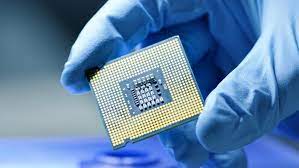The world of semiconductors is a fascinating realm that has revolutionized modern technology and transformed the way we live. From powering our smartphones to driving the most advanced supercomputers, semiconductors are at the heart of almost every electronic device we encounter daily. In this exploration of semiconductors, we will delve into their history, properties, applications, and the exciting future they promise.
1. The Genesis of Semiconductors
The inception of semiconductors can be traced back to the early 20th century when scientists began investigating the electrical properties of materials. Notably, the discovery of the transistor in 1947 by John Bardeen, Walter Brattain, and William Shockley at Bell Laboratories marked a turning point. This revolutionary device replaced bulky vacuum tubes, paving the way for the electronic age and the miniaturization of electronics.
2. Properties of Semiconductors
At the core of semiconductors lies their unique electronic properties. Unlike conductors, which allow easy flow of electric current, and insulators, which inhibit it, semiconductors possess intermediate conductivity. This property arises due to the energy bandgap between the valence and conduction bands, which can be altered through doping and temperature changes. Such versatility makes semiconductors ideal for diverse applications.
3. Semiconductor Devices
The realm of semiconductor devices is vast, encompassing an array of components that drive modern electronics:
- Diodes: Diodes permit current flow in one direction and are fundamental in rectifiers and voltage regulators.
- Transistors: Transistors serve as switches and amplifiers, and their integration into integrated circuits (ICs) allows for complex functionalities in compact packages.
- Microprocessors: These ICs serve as the brains of computers and smartphones, executing millions of instructions per second.
- Memory Devices: From dynamic random-access memory (DRAM) to flash memory, semiconductor-based memory stores data in digital devices.
- Optoelectronic Devices: Light-emitting diodes (LEDs) and laser diodes are examples of semiconductors that convert electrical energy into light.
- Solar Cells: Photovoltaic cells use semiconductors to convert sunlight into electricity, powering renewable energy sources.
4. Advancements and Challenges
The semiconductor industry has witnessed exponential growth over the decades, driven by Moore’s Law, which predicted the doubling of transistor count on a chip approximately every two years. This relentless advancement has led to faster, smaller, and more energy-efficient devices.
However, as feature sizes reach atomic scales, traditional silicon-based transistors face challenges due to power consumption and heat dissipation. Researchers are actively exploring alternative materials, such as carbon-based graphene and gallium nitride, to enable further progress in semiconductor technology.
5. Quantum Computing
Quantum computing is a groundbreaking area of research that leverages the principles of quantum mechanics to revolutionize computation. Quantum bits, or qubits, harness the superposition and entanglement of quantum states, offering the potential to solve complex problems that classical computers cannot handle efficiently.
Conclusion
The world of semiconductors has significantly shaped the course of human history and continues to drive innovation across various industries. From the simple transistor to the mighty microprocessor, semiconductors have transformed how we communicate, compute, and interact with technology. As research and development forge ahead, the future of semiconductors holds exciting prospects, promising to unlock unprecedented computing power and advance humanity towards a new era of technological possibilities.
